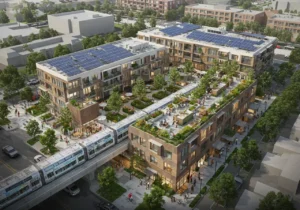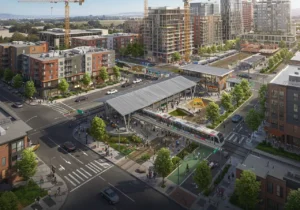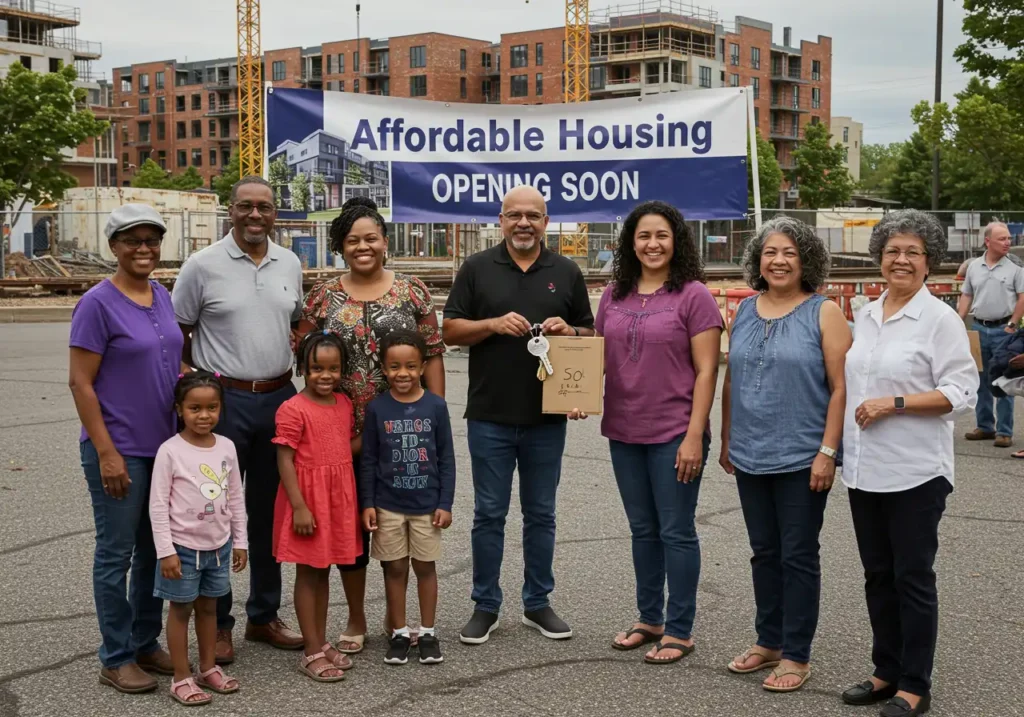California has long struggled with a housing crisis that leaves millions of residents priced out of the market. Rising rents, limited supply, and zoning laws that restrict density have fueled affordability challenges across the state. In 2025, lawmakers passed Senate Bill 79 (SB 79), formally known as the Abundant and Affordable Homes Near Transit Act. This legislation aims to unlock new housing opportunities by allowing taller, denser developments near major transit hubs. Supporters hope SB 79 can address housing shortages while advancing sustainability and reducing car dependency. This article explores what the law does, its potential impacts, and how it may reshape communities across California.
What Is SB 79?
 SB 79 represents one of the boldest efforts yet to expand housing supply in California’s most transit-accessible neighborhoods. The law requires cities to permit multifamily housing up to nine stories high within a half-mile of major transit centers. These include rail stations, rapid bus corridors, and ferry terminals. The bill also streamlines permitting, limits local zoning restrictions, and provides density bonuses for developers who include affordable units in their projects.
SB 79 represents one of the boldest efforts yet to expand housing supply in California’s most transit-accessible neighborhoods. The law requires cities to permit multifamily housing up to nine stories high within a half-mile of major transit centers. These include rail stations, rapid bus corridors, and ferry terminals. The bill also streamlines permitting, limits local zoning restrictions, and provides density bonuses for developers who include affordable units in their projects.
At its core, the legislation reflects a shift away from single-family zoning toward transit-oriented development. By concentrating new housing near public transit, SB 79 seeks to reduce traffic, curb greenhouse gas emissions, and expand access to jobs and services for lower-income Californians.
Key Provisions of SB 79
- Height and density allowances: Depending on proximity to transit, buildings may rise between four and nine stories without local governments imposing additional restrictions.
- Permit streamlining: Affordable housing projects near transit qualify for expedited approval processes, reducing delays and costs.
- Incentives for affordability: Developers can earn density bonuses by reserving a portion of units for low- and moderate-income households.
- Protections in sensitive areas: The law includes safeguards for wildfire zones, historic districts, and communities at environmental risk.
Why SB 79 Matters
California’s housing deficit is estimated at more than three million units. Decades of restrictive zoning have kept supply far below demand, driving up prices. SB 79 addresses two major challenges at once: affordability and sustainability. By concentrating growth near transit, the law encourages a shift away from car dependence. More residents living near bus lines, rail stations, and ferries means fewer long commutes, lower emissions, and better land use efficiency.
For renters and first-time buyers, SB 79 could increase the availability of homes in desirable, connected areas. For cities, it offers an opportunity to modernize outdated zoning codes while aligning with California’s climate and equity goals.
Potential Benefits of SB 79
Supporters of the bill highlight several benefits:
- Housing supply expansion: The law unlocks significant development potential in urban cores and transit corridors where demand is highest.
- Lower carbon footprint: Denser housing near transit reduces reliance on cars, supporting California’s clean energy and emissions reduction targets.
- Economic opportunity: More affordable housing options allow workers to live closer to jobs, reducing commute costs and improving quality of life.
- Social equity: Streamlined approval for projects with affordable units may help vulnerable populations access stable housing in high-opportunity areas.
Challenges and Criticisms
Despite its promise, SB 79 faces challenges. Local governments often resist state preemption of zoning authority. Some community groups worry that new developments may alter neighborhood character or overwhelm infrastructure. Critics also argue that the law may accelerate gentrification and displacement in lower-income areas near transit.
Another concern is whether the affordable units built under SB 79 will be truly accessible to low-income households. Without strong enforcement and long-term affordability requirements, some fear benefits could flow disproportionately to developers and wealthier residents.
How SB 79 Fits Into California’s Housing Strategy
SB 79 is part of a larger wave of pro-housing reforms in California. Recent measures have:
- Expanded opportunities for accessory dwelling units (ADUs), sometimes called “granny flats.”
- Created CEQA exemptions for certain infill developments to reduce costly environmental review delays.
- Restored state funding for affordable housing and homelessness programs in the 2025-2026 budget.
Together, these reforms signal a new era of state intervention in local land use policies. Where local zoning has failed to meet housing demand, the state is stepping in to mandate solutions.
What Residents Should Expect
 For California residents, the effects of SB 79 will unfold gradually. Expect to see more mid-rise and high-rise apartments near train stations, bus lines, and ferry terminals. These projects may bring new retail, amenities, and community services along with housing.
For California residents, the effects of SB 79 will unfold gradually. Expect to see more mid-rise and high-rise apartments near train stations, bus lines, and ferry terminals. These projects may bring new retail, amenities, and community services along with housing.
Homeowners may notice changes in neighborhood density, traffic patterns, and parking availability. Renters could see more affordable units come online, though affordability will vary by project. Local governments will need to adapt by upgrading infrastructure, schools, and public services to accommodate growth.
Steps for Equitable Implementation
For SB 79 to succeed, equitable implementation is essential. Policymakers, advocates, and residents can play roles in shaping outcomes:
- Strengthen affordability requirements: Ensure affordable units remain accessible long-term.
- Prevent displacement: Pair SB 79 with renter protections and anti-displacement programs.
- Invest in infrastructure: Cities must align housing growth with upgrades to transit, utilities, and public services.
- Promote community engagement: Transparent communication with residents can build trust and address concerns about neighborhood change.
Conclusion
California’s SB 79, the Abundant and Affordable Homes Near Transit Act, represents a major step in tackling the state’s housing crisis. By enabling denser development near transit hubs, the law seeks to expand housing supply, cut emissions, and foster more sustainable, equitable communities. While challenges remain—especially around affordability enforcement and local resistance—the potential upside is significant. If implemented thoughtfully, SB 79 could help California not only build more homes but also build a more connected, affordable, and resilient future.
Related reads: California Economy, Clean Energy in California, and Housing Affordability.

